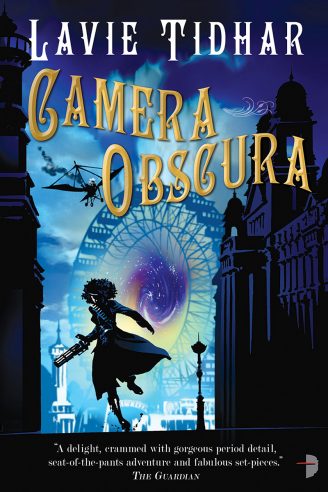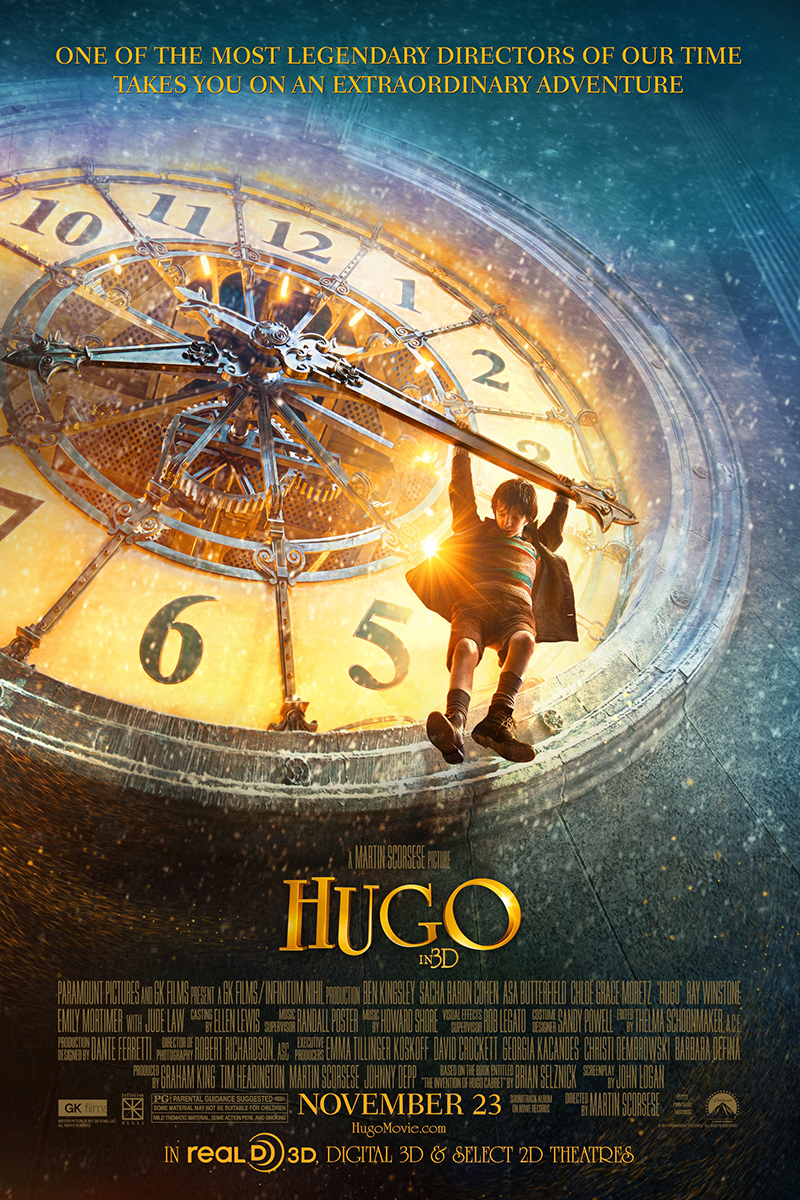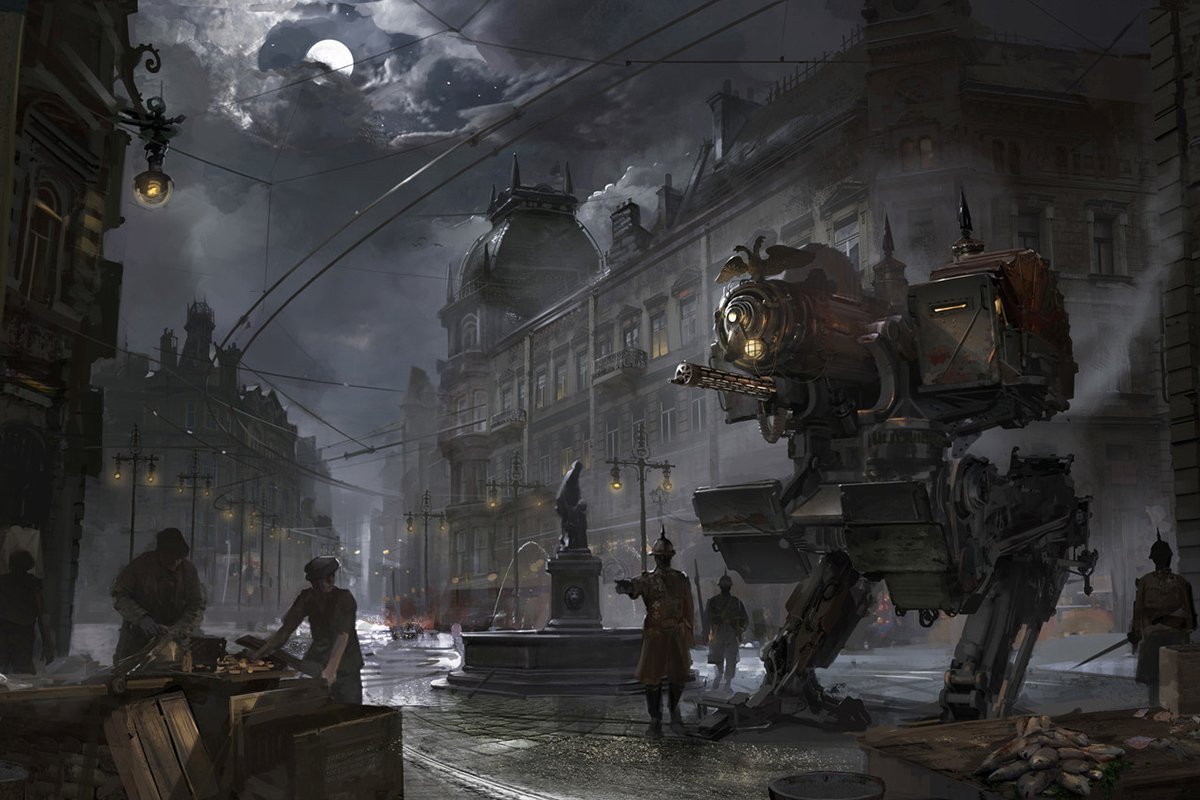Have you ever said to yourself, “Gee, steampunk is awesome, but I wish it had more chicks with Gatling gun arms and lizard guys like in the Super Mario Brothers movie”?
Then Lavie Tidhar’s novel, Camera Obscura, is for you!
The story takes place in 1893 Paris. A murder has been committed in the Rue Morgue. Arriving on the scene is Milady de Winter (who is black in this story), agent extraordinaire for the mysterious Quiet Council.
After kicking the local police out, De Winter proceeds to conduct her own investigation with the help of her robotic insect/pet Grimm. She discovers the corpse has been infected with a strange silvery substance. She has Grimm destroy the body — presumably as part of a cover-up on behest of the Council — and leaves.
Unfortunately for her, this is just the beginning. More victims soon turn up and the killings seem to be related to a set of jade statues with otherworldly properties. Everyone, from the Council to the English lizard men (did I mention the lizards conquered England?), to competing Chinese factions wants to get their hands on the statues for their own agendas.
Milady just wants to stop the murders, but that’s not easy with her own allies betraying her at every step. Just what are these seemingly intelligent statues and can she stay alive long enough to find out?
I have a few problems with an otherwise strong story.
First — De Winter is not a very likable character. She callously bullies her way through murder investigations she may or may not even have jurisdiction over. She threatens people, she destroys evidence and is so intent on getting answers she has the body of one of the murder victims mutilated and forces the dead woman’s daughter to look at it to shock her into coughing up what she knows. She never shows any remorse for these actions, so when Milady is brutally tortured later in the story I did not feel bad for her.
Also, the exact nature of the Council she works for is never explained. They clearly wield power of some kind, but Tidhar doesn’t let us in on it. From start to finish they are mostly a group of amoral Illuminati types barking orders. The story is told from the point of view of their best agent, so I don’t see why she couldn’t take a paragraph to sum it up for us.
Another problem, albeit one that is not directly tied in with the plot, is Tidhar’s habit of having the next character speak while still on the same paragraph. Milady will finish speaking and another person will immediately say something on the same line. Since you can still tell when another character begins speaking, it’s not confusing so much as jarring. Still, it comes off as unprofessional (at least, to me).
If you can get past all that, you’ll find an engaging narrative filled with colorful characters. Throughout her journey, Milady encounters, in one form or another, a spattering of historical and literary figures, such as Victor von Frankenstein, Nikola Tesla, the Marquis de Sade, Dr Moreau and Buffalo Bill Cody.
The locales in the story are even more compelling. From nineteenth-century Paris to an underwater city to the Chicago World’s Fair, I’d say these places are the real star of the book.






2 Comments
Add YoursOoh I have read the first in this series and absolutely adored it! Lots of people hated all the literary references, but that made it perfect for me! Thanks for reminding me to read this!
Well, I heard the two stories are unconnected, but set in the same world by the same author, so it should be fantastic!